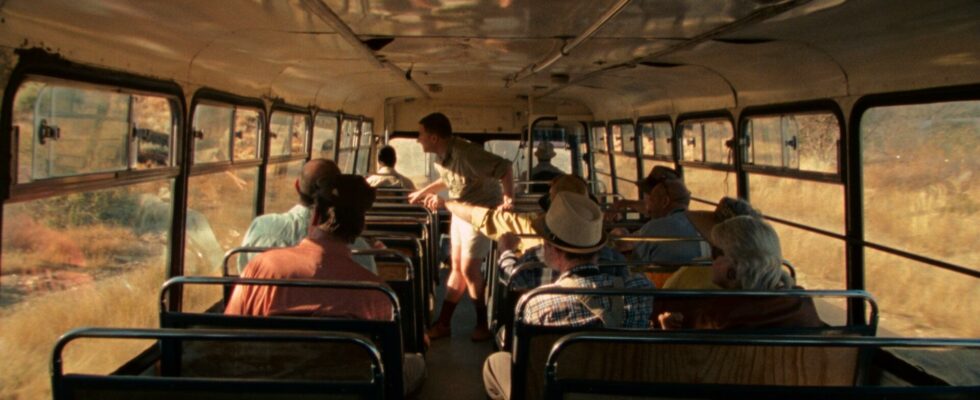On screens this January 1, the story of a hippopotamus, Pepe, one of the animals from the personal collection of Pablo Escobar, the Colombian drug trafficker. Crowned with the directing prize at the last Berlin festival, “Pepe” by Dominican Nelson Carlo de Los Santos Arias is both disconcerting and captivating.
4 mins
The popular imagination associates the hippopotamus, because of its corpulence, with a form of nonchalance. The animal spends hours monitoring the water surface with just four balls emerging, eyes and ears, and traces its furrow in the water or mud. But in this fourth feature film by the director from the Dominican Republic, there are no furrows, only tracks that the director immediately tries to blur.
A puzzle film
The beginning of the film sets the tone, a sort of sound and visual puzzle: white screen against a backdrop of dialogue in Colombian Spanish between security forces before an assault; appearance of a cartoon character, Pepe Pótamo, the little blundering hippopotamus who travels in a hot air balloon, star of the small screen in the sixties; TV archive footage of the death of Pablo Escobar in Medellin in 1993; a lighthouse that sparkles to the rhythm of crackling bullets; a rhythm of percussion on a drum skin… and here we are in southern Africa on the banks of the Okavango. Hippos bathe in milky water and a strange voice makes vocalizations, a monologue sometimes in Afrikaan sometimes in mubukushu. “ What did I do to be dead », asks the voice.
Our journey, like that of the Colombian hippos, really begins on the banks of this Namibian river where Pepe’s parents were captured and where his spirit came to seek refuge. A return to basics of sorts. Pepe speaks the same language as Shilli, the Namibian tracker who accompanies these German tourists on a photo safari and tells them about this piece of land that men share with hippos. Moreover, the legend says that elephants, once upon a time, were men, that they fought with hippos and that if their noses grew longer, it was because the hippos shot them… They are wise and knowledgeable animals who know when death is approaching, says Shilli.
From Africa to the Americas
Shilli the tracker is the colonized person who is being humiliated. Pepe’s parents were taken by white “two legs” beyond the sea, in Colombiaon Pablo Escobar’s Napoles hacienda. “ A curse that stinks of death, gringo and arepa “, Pepe’s voice from beyond the grave tells us. They can be the symbol of these peoples of Africa torn from their land. Colombia and the American continent are territories of mixed blood. In the film, the Pablitos are the bad guys: Pablito the narco, feared by his henchmen, and Pablito, Pepe’s big hippo brother who killed his father to become leader of the herd… But perhaps there is- Is there only one Pablito? Pepe will also be a victim of human violence (the boasts of Candelario the fisherman who says he was frightened by a monster coming out of the water will lead the army on his trail) and of bureaucratic absurdity (dizzying polemic in voice-over on the murder of Pepe while a young woman combs a child’s long hair).
“ Pepe was shot because he wasn’t from here… because he was a savage… so many obscene arguments ”, we hear. The animal’s last words evoke a ” baroque mixture, excessive, opaque, heterogeneous », like this unclassifiable film which also offers us visual and sonic breaths of great beauty: the sunsets over the Okavango River, the stark contrasts of the Namibian desert, the majesty of the Magdalena in Colombia. The landscapes and lights are sumptuous. The soundtrack hums with animal cries and bird songs. “ A film is not made for a stroll with the eyes, but to penetrate it, to be completely absorbed in it. », wrote the filmmaker Robert Bresson. Confusing and captivating therefore.
Also readColombia wants to give Pablo Escobar’s hippos to India and Mexico
